Blossom end rot and tomatoes
sheilajoyce_gw
8 years ago
Featured Answer
Sort by:Oldest
Comments (6)
Cherryfizz
8 years agoUser
8 years agoRelated Discussions
How Much Calcium Can You Get From Crushed Eggs?
Comments (19)When Good Tomatoes Go Bad by Charlie Nardozzi Finally, it's time to enjoy the results of weeks of pampering young tomato plants. However, nothing is more frustrating after so much effort than seeing misshapen or rotten fruits on the vines. It's easy to blame pests or diseases, but the weather, the tomato variety, or even your gardening practices may be the actual cause. To help you identify what's spoiling your tomatoes, we've compiled a list of eight of the most common tomato fruit problems not caused by insect or disease. You can do something about most of these problems now, so the next cluster of tomatoes on your plants could be perfect. We also include suggestions for resistant varieties to plant next year. But first, here are the three basic steps for growing healthy, perfect tomatoes: Supply and conserve water. Tomato plants need 1 to 1 1/2 inches of water a week from either rain or irrigation. Often the problem is not the amount of water, but sudden changes in soil-moisture levels. To conserve moisture, mulch plants with a 4- to 6-inch layer of hay or straw. Keep plants warm, but not hot. In early summer, protect young plants from cold temperatures by covering them, especially at night. Conversely, in mid- to late summer, protect plants (especially fruits) from high temperatures with afternoon shade. Feed carefully and avoid high-nitrogen fertilizers. Two weeks before planting, work in a 2- to 3-inch layer of compost, then fertilize the plants with a complete fertilizer (5-10-10) at the rates recommended on the label. Side-dress your tomatoes monthly with a complete fertilizer. Click on the following link for the rest of the article: http://doityourself.com/vegetables/whengoodtomatoesgobad.htm Eight Avoidable Tomato Problems These stresses have sent many befuddled gardeners looking for a pest or disease. Tomato experts call the stresses physiological problems, meaning the cause has to do with the functioning of the plant itself, not with any outside agent. Blossom-End Rot What it looks like: Brown-black sunken areas appear on the blossom end of green or ripening fruit. Causes: Insufficient calcium levels in the developing fruit cause the cells in the blossom end to break down. Though insufficient levels of calcium in the soil may be the cause, it is more likely fluctuating moisture levels. This is why it is important to apply a mulch. Water transports calcium through the plant. With insufficient water, calcium doesn't move quickly enough to the fruits. As little as 30 minutes of water deficiency at any time can cause blossom-end rot. These other factors contribute but are all ultimately connected to calcium availability in the developing fruit: excess nitrogen fertilization, high soil salinity, waterlogged soils, root damage during cultivation, and soil pH that's too low or too high. Blossom-end rot occurs most often on the first fruit clusters, when the plant grows quickly and demands calcium for leaf growth. What to do: Pick and destroy rotten fruits, keep the soil pH around 6.5, reduce nitrogen fertilization, and apply a complete fertilizer such as 5-10-10 (1/2 cup per 10-foot row) once early in the growing season. Also, mulch early in the season with a 4- to 6-inch layer of hay or straw. Apply at least 1 1/2 inches of water a week, and avoid growing susceptible older indeterminates (vining tomatoes) such as 'Beefsteak' and both determinate and indeterminate varieties of plum tomatoes ('Roma' is one example). Blotchy Ripening (graywall) What it looks like: First you see light green or clear blotches on green fruit. These patches gradually turn yellow, and the tomato doesn't ripen evenly. Often, the tomato is rotten inside. Causes: Graywall is most often caused by shade and cool temperatures followed by bright, sunny weather. Excessive foliage growth also causes it, so the most vigorous indeterminate tomato varieties are the most susceptible. But other factors promote graywall. For instance, it occurs more often in plants growing in soggy soils, and diseases like tobacco mosaic virus may indirectly cause this condition. What to do: Grow determinate bush varieties that allow sunlight through the leaf canopy. Decrease nitrogen fertilizer, and increase potassium. Stake or cage plants to allow sufficient light to reach the fruit. Catfacing What it looks like: Misshapen fruit has black scarred areas on the blossom end that often rot. Causes: Catfacing happens when flowers don't develop properly. The most common cause is low temperatures (below 65oF during the day and 55oF at night) three weeks before flowers open. High wind on plants with little foliage can also damage blossoms. Although a common problem on the first fruit clusters, it disappears when temperatures rise. But it may recur if the plants are still setting fruit as temperatures drop in the autumn. Larger and older varieties such as 'Beefsteak' are more susceptible to catfacing. What to do: Grow the plants when temperatures are high during pollination by planting later in the season and protecting transplants from cold and wind with plastic cloches or floating row covers. What to do: To avoid catfacing next year, grow modern hybrid varieties that are much less likely than older ones to be bothered by low temperatures and don't prune off the foliage. Fruit Cracks What it looks like: When ripening, fruits crack around the stem end and along the sides, and the fruit rots. Cracks may be radial or concentric. Causes: Abruptly alternating wet and dry periods cause cracking. When the plant takes up deep drinks of moisture after a dry spell, the fruit cells expand too fast and burst, and the skin cracks. (Heavy dew worsens cracking because the fruit can take water in through the skin.) The soft-fruited 'Celebrity' and cherry tomato 'Sweet 100' are particularly prone to cracking. Too much nitrogen in the soil also contributes to the problem. Green fruits usually don't crack because they're harder and can't expand as fast, and their skin cells are stronger. What to do: Keep the soil evenly moist, especially during ripening, with a 4- to 6-inch mulch of hay or straw. Don't overfertilize. If maintaining soil moisture is difficult in your area, plant less-susceptible varieties next year. 'Mountain Spring' and 'Mountain Belle' (a cherry tomato) are good options. Green (or yellow) Shoulders What it looks like: The "shoulders" on the tomato's stem end stay green (or yellow) and hard as the rest of the fruit ripens. Cause: Normally chlorophyll breaks down as the fruit ripens. However, in some varieties, during periods of high temperatures and direct sun exposure, the chlorophyll does not break down, or does so too slowly. What to do: This problem is most common in heirloom varieties that happen to lack the gene for uniform ripening. Most modern hybrids have this gene and rarely develop green shoulders. However, if you want to grow the older, susceptible varieties, minimize green shoulders by maintaining good foliage cover and picking the tomatoes when they're entirely green to ripen indoors, away from exposure to direct sun. Puffiness What it looks like: Fruits lack internal jelly and have a hollow or "puffy" feel. Causes: Puffiness is caused by incomplete pollination, which in turn is most commonly caused by temperatures that are too high or too low. (Tomatoes are almost completely self-pollinating, so pollinating insects aren't a factor.) Whenever nighttime temperatures drop below 55oF or daytime temperatures rise above 100oF, seed doesn't set properly. Improper pollination prevents the jelly of the inside fruit chamber from developing. Also, too much nitrogen or too little potassium in the soil causes poor pollen formation, leading to puffiness. What to do: Set plants out once nighttime temperatures are consistently above 55oF, or protect young transplants from cold with a floating row cover. In hot climates, use shadecloth to keep plants cool. Protect them from hot winds. Reduce nitrogen fertilization, and test soil to check potassium levels. Next year, plant resistant varieties, such as 'Celebrity' and 'Better Boy', which are less likely to develop the problem under any circumstances. Sunscald What it looks like: The fruit has lighter-colored leathery patches, and fruit usually rots. Cause: This discoloration is like a sunburn. Fruits exposed either suddenly or continually to hot sun develop sunscald, which is most likely to occur on varieties that don't produce enough leaves. What to do: Avoid pruning leaves or stems while the fruit is ripening, and consider shading the fruit. A small section of shadecloth or row cover would suffice. Finally, try to reduce the severity of leaf diseases such as early and late blight, common fungal diseases. If you live where summers are sunny and hot, grow indeterminate varieties that produce a thick cover of shading leaves. Examples are 'Jet Star', and 'Big Beef'. Zippering What it looks like: This problem is aptly named because it looks just like a zipper running from top to bottom on the skin of the fruit. It's disfiguring, but the fruit can still develop properly. Cause: Temperatures below 55oF when flowers are dropping off the young fruit cause this condition. Zippering can occur at higher temperatures, too. Some varieties, such as 'Mountain Spring' and 'Mountain Pride', are genetically predisposed to the problem. Others, such as 'Big Beef', are not. What to do: Cover young transplants with floating row covers to reduce the chances of cold damage to young fruit. Next year, plant a resistant variety such as 'Big Beef'. Charlie Nardozzi is a senior horticulturist at National Gardening....See MoreBlossom end rot prevention...
Comments (7)You can try, but I'm not convinced crushed eggshells or eggshell water makes that much of a difference. I've tried them and couldn't see it made an impact. Blossom end rot is linked to calcium deficiency to a certain extent, but it isn't necessarily that the calcium isn't present in the soil but rather than some other nutritional imbalance or other growing conditions can interfere with uptake of the calcium. That's one reason BER can be so vexing. One way (though probably not the only one) that BER develops is that rapidly growing plants (esp. if just overfed with nitrogen) draw extra moisture and and nutrients out of the fruit and into the leaves, and at that point the fruit develop BER. In general, tomatoes that suffer from water stress or from extreme fluctuations in soil moisture levels are prime candidates for BER, but not all varieties develop it equally. Some varieties, especially paste type varieties like Roma, seem more prone to it than others and I have only see it on cherry types once or twice in many years of tomato growing. Some of the other conditions that may cause BER include cool and humid weather; heavy, dense, extremely compacted soil; unmulched soil (because moisture levels fluctuate more); and excessive levels of some nutrients that interfere with calcium uptake including potassium and nitrogen. Sometimes BER may be caused by root damage. Often, I think BER may be linked to a heavy fruit load on a plant that is relatively immature because you'll often see it on the first few fruit, red or green, on younger plants earlier in the year and then not on those same plants again after they've matured a bit more. If your soil seems calcium deficient, you can add lime to your soil if you have acidic soil and you can add gypsum to your soil if you have alkaline soil. I just throw eggshells on the compost pile and let them decompose and add the compost to the beds. Otherwise, I'm not convinced they break down fast enough to help the plants. I don't think Tomato-Tone is the supreme answer. I have used it for several years, and every now and then I still have a tomato plant with BER on some of the fruit despite that, though generally when I see it, it is on fruit in container plantings, not those in the ground. They all get fed with Tomato Tone, though. Good luck resolving the BER. The good news about BER is it often (though not always) goes away on its own. Dawn...See MoreBlossom End Rot
Comments (7)Our favorite tomato expert Carolyn137 wrote an excellent response to a question about Blossom End Rot (BER) and I am quoting it here: With BER there is NO problem with absorption of Ca++ though the roots. The problem is maldistribution within the plant that can be induced by a number of stresses which include uneven delivery of water, too much N, growing in too rich soil, too hot, too cold, too wet, too dry you name it. As the plants mature they can better handle the streses that can induce BER so usually it goes away. The two exceptions are first, if the soil has NO Ca++ as confirmed with a soil test, and that's a rare condition, and second, if the soil is too acidic in which Case Ca++ is bound in the soil. Again, adding lime, egg shells and on and on can not and will not prevent BER b'c absorption of Ca++ thru the roots is OK. Paste tomatoes are especially susceptible to BER and I think someone in a post above mentioned that. If you go to the top of this first page and click on the FAQ link and scroll down you'll also find an article about BER in case some of you have never looked at the FAQ's And there's some darn good articles there as well, but I wouldn't pay any attention to the variety list b'c it's way out of date. The old information about BER being caused solely by lack of soil Ca++ has been shown to be wrong with research that's been done in the last 20 years or so, but it's going to take another generation before the real story gets into books, websites, magazines, etc. Most of the better websites already have the correct information. BER affects not only tomatoes, but peppers, squash, cabbage, cauliflower, etc., and it's a huge multimillion dollar problem for the industry, which is WHY all that reasearch was done. For instance, when tissues were taken from a plant that has BER fruits and was assayed for Ca++, the normal level of Ca++ was found, it just wasn't getting to the blossom end of fruits. And there's also a condition called internal BER where the fruits look fine, no evidence of BER externally, but when you cut open the fruit the inside is black Hope that helps So, unless you have had your soil professionally tested, and it is calcium deficient, adding calcium will make no difference. Betsy...See MoreAnything new on blossom end rot on Tomatoes
Comments (2)Carolyn, Thanks for your informative in depth analysis of BER Iowafarmer, SORRY there is no cure for BER. But hang around a bit, it will go away. Go and read Dr. Carolyn's article....See Moresjerin
8 years agorhizo_1 (North AL) zone 7
8 years agolast modified: 8 years agosjerin
8 years ago
Related Stories
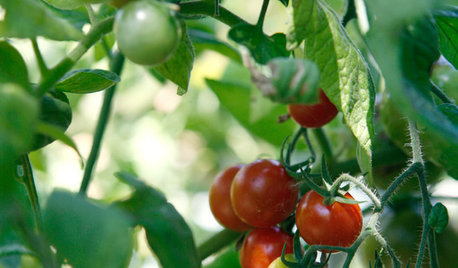
EDIBLE GARDENSSummer Crops: How to Grow Tomatoes
Plant tomato seedlings in spring for one of the best tastes of summer, fresh from your backyard
Full Story
FARM YOUR YARDHouzz Call: Home Farmers, Show Us Your Edible Gardens
We want to see where your tomatoes, summer squashes and beautiful berries are growing this summer
Full Story
FEEL-GOOD HOME21 Ways to Waste Less at Home
Whether it's herbs rotting in the fridge or clothes that never get worn, most of us waste too much. Here are ways to make a change
Full Story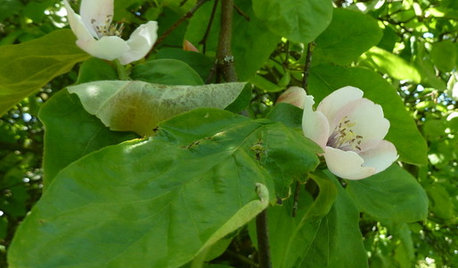
EDIBLE GARDENSWhy Grow Quince? For Beauty, Fragrance and Old-Time Flavor
Delightfully perfumed fruit and lovely spring blossoms make this apple and pear cousin worth a spot in the garden
Full Story
EDIBLE GARDENSHow to Grow Your Own Apricots
Velvety fruit, pretty blossoms and interesting bark make apricot trees a delight — and they’re great for smaller gardens
Full Story
HOUSEPLANTSHow to Force Amaryllis Bulbs Indoors
Enjoy vibrant red blossoms even as gardens turn snowy white, by teaching this hardy repeat performer to ignore the calendar
Full Story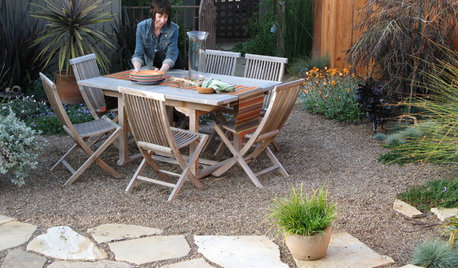
LANDSCAPE DESIGN15 Great Ideas for a Lawn-Free Yard
End the turf war for good with hardscaping, native grasses and ground covers that save water and are easier to maintain
Full Story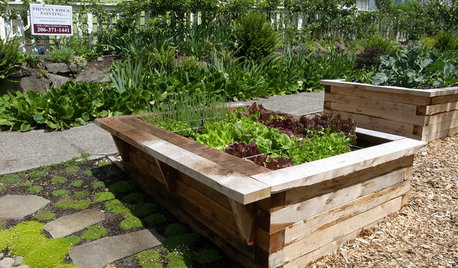
FARM YOUR YARDHow to Build a Raised Bed for Your Veggies and Plants
Whether you’re farming your parking strip or beautifying your backyard, a planting box you make yourself can come in mighty handy
Full Story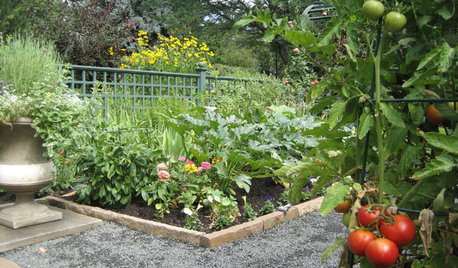
SPRING GARDENINGInspiring Raised Beds for Fall and Spring Planting
Make Your Next Vegetable Garden Even Better with Beautiful Boxes and Paths
Full Story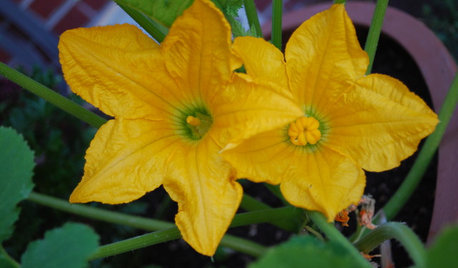
EDIBLE GARDENSSummer Crops: How to Grow Squash
Almost foolproof and with cheerful flowers, squash comes in a wide range of varieties to plant in spring
Full Story


rhizo_1 (North AL) zone 7